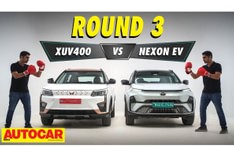Tata Motors says it hopes to sell about 10,000 electric vehicles every month as it expands its line-up to over half a dozen vehicles in the next year. The company has achieved the milestone of 1 lakh EVs in sales in the last five years, and expects to sell the next 1 lakh units within 12-14 months, said a senior executive of the company.
Celebrating its latest milestone, Shailesh Chandra, MD of Tata Passenger Electric Mobility, tells Autocar India, "The first 10,000 units would have taken us nearly 44 months. Then 50,000 [10,000 to 50,000 units] took us an additional 15 months, and the next 50,000 happened in nine months. Now, the next 1 lakh should happen in 12-14 months is what I would expect."
With about 19,000 EVs in sales in the first quarter of FY24 (April-June 2023), group CFO PB Balaji has said Tata Motors is on the path to an annual volume of 1 lakh electric vehicles. The company, which seeded EVs in key markets, to begin with, has already penetrated over 130 cities with more than 250 dealers. In the last five years, over 6,500 public chargers have come up, which is fast moving to 10,000 chargers. There are chargers being set up at 1,500 residential complexes with 1 lakh home chargers already.
With the introduction of the Tiago EV, the penetration of zero-emission vehicles accelerated to 14-15 percent of the company's total sales, and it has now set a vision of 50 percent penetration by 2030. Chairman Natrajan Chandrasekaran recently confirmed that in the next few quarters, four new EVs (Nexon EV facelift, Punch EV, Harrier EV and Curvv EV) will be launched, and this is set to expand the price point from Rs 8.5 lakh with Tiago EV at the entry-level to the Rs 30 lakh Harrier EV at the top.
'A calculated gamble': Shailesh Chandra
The management sees the journey as a transformational one, given the fact that when the company kicked off its EV business, the vendors didn’t believe them, customers felt that the EVs were the cars for the future, and there were hardly any players to invest in infrastructure. "When we entered the market, there were no enablers, and the market was not ready for electrification," recalls Chandra on the journey. "But as a Group we took a bet given the challenges of pollution, climate change and higher dependence on imports, and the bet has paid off. Today, the suppliers want to invest, the customer mindset has transformed faster than we thought and the charging infrastructure came up faster than expected."
But these learnings came through addressing niggling issues. Since it is a new technology in a new environment, Chandra admits that Tata Motors faced certain problems and so did its customers. "The idea was that we respond to those problems fast and do the root cause analysis, doing combinations of immediate and permanent corrective actions, and today the technology has matured a lot. There are lesser problems today than we see," he adds.
Tata Motors has a strong first-mover advantage and the learnings of the last five years will hold the company in good stead. The company today has a market share of over 85 percent and it is well funded to create a portfolio of over 10 EVs by the end of 2025-'26. It has committed an investment of USD 2 billion (roughly Rs 16,580 crore) in the EV business starting in 2022 over a period of five years.
Also see:
Tata Group likely to procure battery from global supplier Envision AESC
‘No plans for hybrids, focused on EVs’: Tata Motors chairman







Comments
Member Login
Personal Details
No comments yet. Be the first to comment.